Hi everyone 
On a ship, I have a large CuNi 90/10 pipe that contains seawater. The Seawater has little to no circulation. I know that we need to circulate oxygen-rich water for a prolonged time to establish a sufficient oxide layer on the pipe. From the yard during the new build, this was not performed properly.
Questions:
1. What is your opinion on the inner surface of the pipe. Do we have an inner surface that "looks" ok?
2. Or do we have a problem with excessive corrosion? Have not taken UT measurements of the wall thickness. I think it is difficult to analyze based on the pictures. The surface feels mostly smooth.
When I rub my finger on the surface it turns brown/ Black.
3. The last picture shows an area between 7 to 9 o clock that looks dark grey/brown. Is this the surface we want to have?
3. What is the ideal surface characteristics/colure of a CuNi pipe that runs seawater and has a well-established protective oxide layer?
4. I have taken a water sample since some of the water had dark particles. The result from the water sample showed 58% corrosion product of copper. The pipe was not properly flushed after commissioning. So maybe some of these particles from the water sample are corroded products from welding/grinding during installation. ?
I have attached some photos.
For info, the pipe has been drained for seawater about 2 weeks ago. I think this is the reason for the greenish stripe at the bottom of the pipe where some water hasn't been drained.
Other relevant info:
Age pipe: 6 years
Medium: seawater
Material: CuNi 90/10 with min. 1.5% Fe
Thickness: 4.5mm
Weld: Seamless full penetration.
Diameter: DN300
Thank you
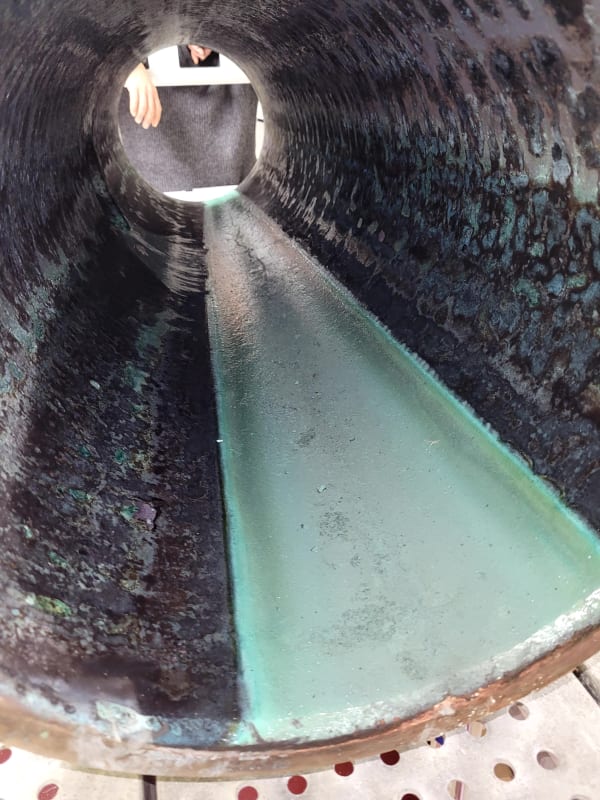
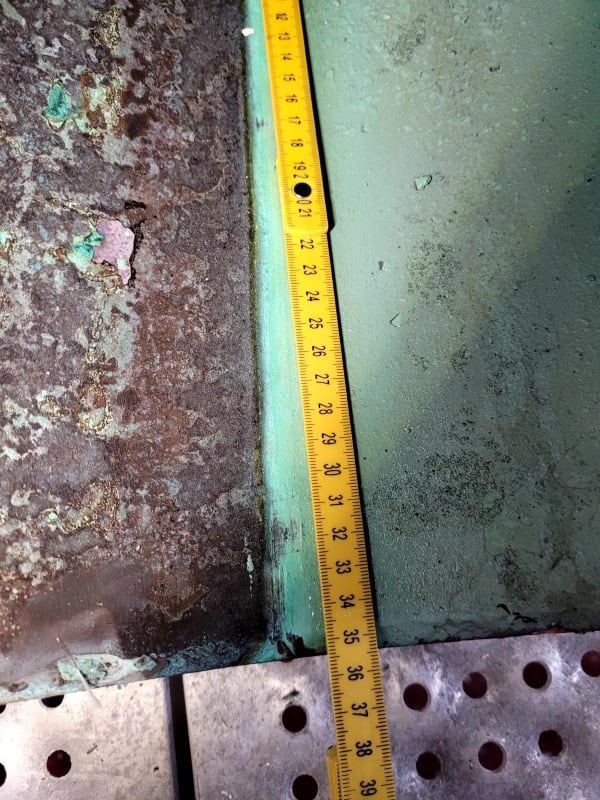
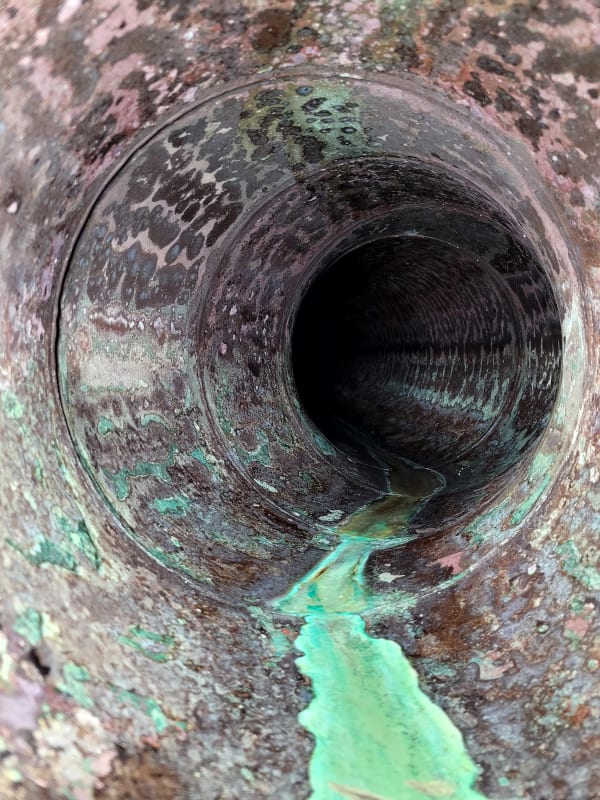
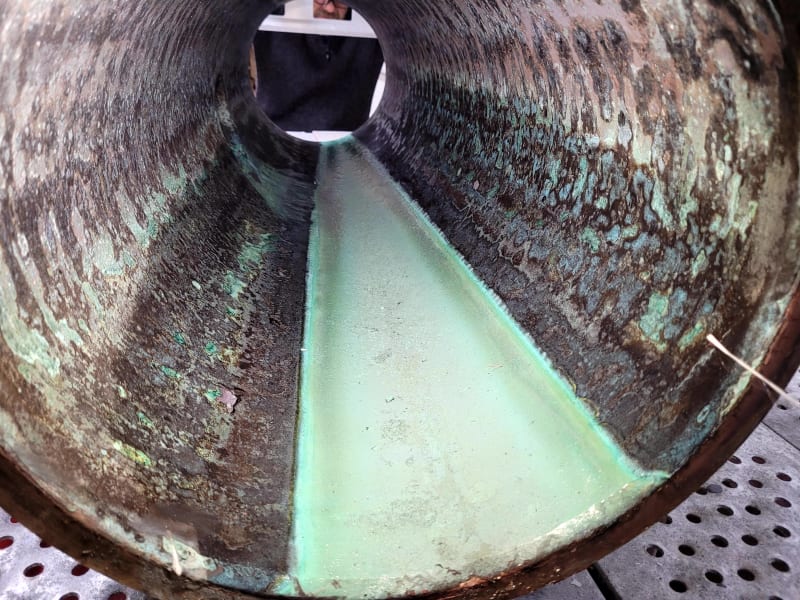
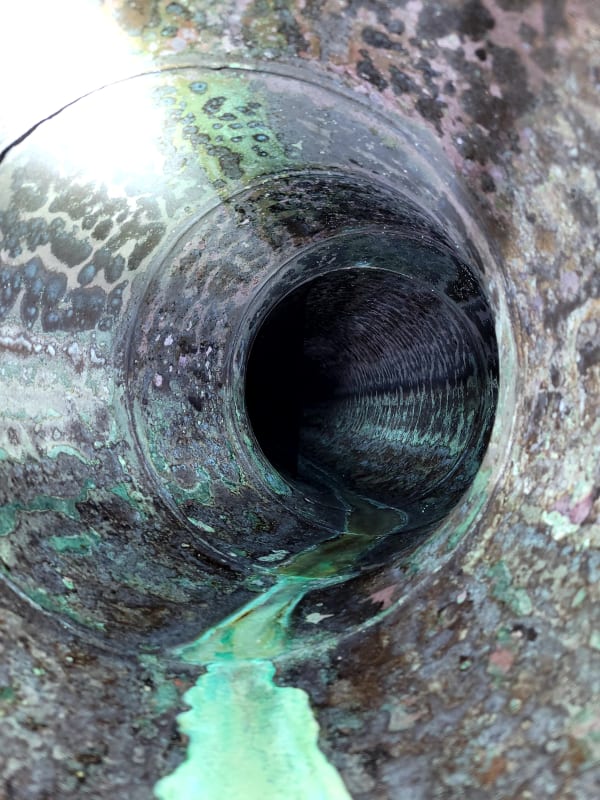

On a ship, I have a large CuNi 90/10 pipe that contains seawater. The Seawater has little to no circulation. I know that we need to circulate oxygen-rich water for a prolonged time to establish a sufficient oxide layer on the pipe. From the yard during the new build, this was not performed properly.
Questions:
1. What is your opinion on the inner surface of the pipe. Do we have an inner surface that "looks" ok?
2. Or do we have a problem with excessive corrosion? Have not taken UT measurements of the wall thickness. I think it is difficult to analyze based on the pictures. The surface feels mostly smooth.
When I rub my finger on the surface it turns brown/ Black.
3. The last picture shows an area between 7 to 9 o clock that looks dark grey/brown. Is this the surface we want to have?
3. What is the ideal surface characteristics/colure of a CuNi pipe that runs seawater and has a well-established protective oxide layer?
4. I have taken a water sample since some of the water had dark particles. The result from the water sample showed 58% corrosion product of copper. The pipe was not properly flushed after commissioning. So maybe some of these particles from the water sample are corroded products from welding/grinding during installation. ?
I have attached some photos.
For info, the pipe has been drained for seawater about 2 weeks ago. I think this is the reason for the greenish stripe at the bottom of the pipe where some water hasn't been drained.
Other relevant info:
Age pipe: 6 years
Medium: seawater
Material: CuNi 90/10 with min. 1.5% Fe
Thickness: 4.5mm
Weld: Seamless full penetration.
Diameter: DN300
Thank you






